Honeywell 2004 Annual Report Download - page 55
Download and view the complete annual report
Please find page 55 of the 2004 Honeywell annual report below. You can navigate through the pages in the report by either clicking on the pages listed below, or by using the keyword search tool below to find specific information within the annual report.-
 1
1 -
 2
2 -
 3
3 -
 4
4 -
 5
5 -
 6
6 -
 7
7 -
 8
8 -
 9
9 -
 10
10 -
 11
11 -
 12
12 -
 13
13 -
 14
14 -
 15
15 -
 16
16 -
 17
17 -
 18
18 -
 19
19 -
 20
20 -
 21
21 -
 22
22 -
 23
23 -
 24
24 -
 25
25 -
 26
26 -
 27
27 -
 28
28 -
 29
29 -
 30
30 -
 31
31 -
 32
32 -
 33
33 -
 34
34 -
 35
35 -
 36
36 -
 37
37 -
 38
38 -
 39
39 -
 40
40 -
 41
41 -
 42
42 -
 43
43 -
 44
44 -
 45
45 -
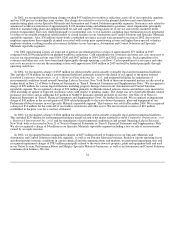 46
46 -
 47
47 -
 48
48 -
 49
49 -
 50
50 -
 51
51 -
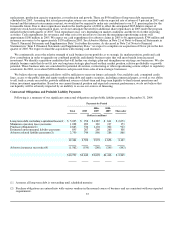 52
52 -
 53
53 -
 54
54 -
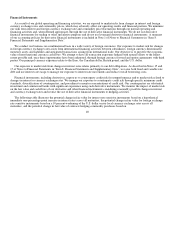 55
55 -
 56
56 -
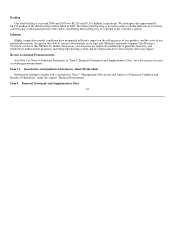 57
57 -
 58
58 -
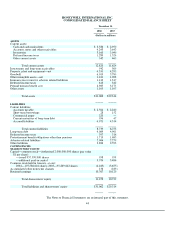 59
59 -
 60
60 -
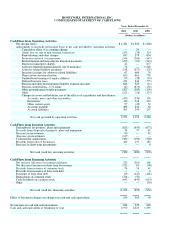 61
61 -
 62
62 -
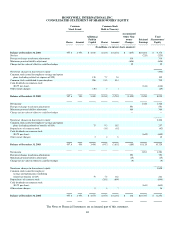 63
63 -
 64
64 -
 65
65 -
 66
66 -
 67
67 -
 68
68 -
 69
69 -
 70
70 -
 71
71 -
 72
72 -
 73
73 -
 74
74 -
 75
75 -
 76
76 -
 77
77 -
 78
78 -
 79
79 -
 80
80 -
 81
81 -
 82
82 -
 83
83 -
 84
84 -
 85
85 -
 86
86 -
 87
87 -
 88
88 -
 89
89 -
 90
90 -
 91
91 -
 92
92 -
 93
93 -
 94
94 -
 95
95 -
 96
96 -
 97
97 -
 98
98 -
 99
99 -
 100
100 -
 101
101 -
 102
102 -
 103
103 -
 104
104 -
 105
105 -
 106
106 -
 107
107 -
 108
108 -
 109
109 -
 110
110 -
 111
111 -
 112
112 -
 113
113 -
 114
114 -
 115
115 -
 116
116 -
 117
117 -
 118
118 -
 119
119 -
 120
120 -
 121
121 -
 122
122 -
 123
123 -
 124
124 -
 125
125 -
 126
126 -
 127
127 -
 128
128 -
 129
129 -
 130
130 -
 131
131 -
 132
132 -
 133
133 -
 134
134 -
 135
135 -
 136
136 -
 137
137 -
 138
138 -
 139
139 -
 140
140 -
 141
141 -
 142
142 -
 143
143 -
 144
144 -
 145
145 -
 146
146 -
 147
147 -
 148
148 -
 149
149 -
 150
150 -
 151
151 -
 152
152 -
 153
153 -
 154
154 -
 155
155 -
 156
156 -
 157
157 -
 158
158 -
 159
159 -
 160
160 -
 161
161 -
 162
162 -
 163
163 -
 164
164 -
 165
165 -
 166
166 -
 167
167 -
 168
168 -
 169
169 -
 170
170 -
 171
171 -
 172
172 -
 173
173 -
 174
174 -
 175
175 -
 176
176 -
 177
177 -
 178
178 -
 179
179 -
 180
180 -
 181
181 -
 182
182 -
 183
183 -
 184
184 -
 185
185 -
 186
186 -
 187
187 -
 188
188 -
 189
189 -
 190
190 -
 191
191 -
 192
192 -
 193
193 -
 194
194 -
 195
195 -
 196
196 -
 197
197 -
 198
198 -
 199
199 -
 200
200 -
 201
201 -
 202
202 -
 203
203 -
 204
204 -
 205
205 -
 206
206 -
 207
207 -
 208
208 -
 209
209 -
 210
210 -
 211
211 -
 212
212 -
 213
213 -
 214
214 -
 215
215 -
 216
216 -
 217
217 -
 218
218 -
 219
219 -
 220
220 -
 221
221 -
 222
222 -
 223
223 -
 224
224 -
 225
225 -
 226
226 -
 227
227 -
 228
228 -
 229
229 -
 230
230 -
 231
231 -
 232
232 -
 233
233 -
 234
234 -
 235
235 -
 236
236 -
 237
237 -
 238
238 -
 239
239 -
 240
240 -
 241
241 -
 242
242 -
 243
243 -
 244
244 -
 245
245 -
 246
246 -
 247
247 -
 248
248 -
 249
249 -
 250
250 -
 251
251 -
 252
252 -
 253
253 -
 254
254 -
 255
255 -
 256
256 -
 257
257 -
 258
258 -
 259
259 -
 260
260 -
 261
261 -
 262
262 -
 263
263 -
 264
264 -
 265
265 -
 266
266 -
 267
267 -
 268
268 -
 269
269 -
 270
270 -
 271
271 -
 272
272 -
 273
273 -
 274
274 -
 275
275 -
 276
276 -
 277
277 -
 278
278 -
 279
279 -
 280
280 -
 281
281 -
 282
282 -
 283
283
 |
 |

Financial Instruments
As a result of our global operating and financing activities, we are exposed to market risks from changes in interest and foreign
currency exchange rates and commodity prices, which may adversely affect our operating results and financial position. We minimize
our risks from interest and foreign currency exchange rate and commodity price fluctuations through our normal operating and
financing activities and, when deemed appropriate, through the use of derivative financial instruments. We do not use derivative
financial instruments for trading or other speculative purposes and do not use leveraged derivative financial instruments. A summary
of our accounting policies for derivative financial instruments is included in Note 1 of Notes to Financial Statements in “Item 8.
Financial Statements and Supplementary Data”.
We conduct our business on a multinational basis in a wide variety of foreign currencies. Our exposure to market risk for changes
in foreign currency exchange rates arises from international financing activities between subsidiaries, foreign currency denominated
monetary assets and liabilities and anticipated transactions arising from international trade. Our objective is to preserve the economic
value of non-functional currency cash flows. We attempt to have all transaction exposures hedged with natural offsets to the fullest
extent possible and, once these opportunities have been exhausted, through foreign currency forward and option agreements with third
parties. Our principal currency exposures relate to the Euro, the Canadian dollar, British pound, and the U.S. dollar.
Our exposure to market risk from changes in interest rates relates primarily to our debt obligations. As described in Notes 15 and
17 of Notes to Financial Statements in “Item 8. Financial Statements and Supplementary Data”, we issue both fixed and variable rate
debt and use interest rate swaps to manage our exposure to interest rate movements and reduce overall borrowing costs.
Financial instruments, including derivatives, expose us to counterparty credit risk for nonperformance and to market risk related to
changes in interest or currency exchange rates. We manage our exposure to counterparty credit risk through specific minimum credit
standards, diversification of counterparties, and procedures to monitor concentrations of credit risk. Our counterparties are substantial
investment and commercial banks with significant experience using such derivative instruments. We monitor the impact of market risk
on the fair value and cash flows of our derivative and other financial instruments considering reasonably possible changes in interest
and currency exchange rates and restrict the use of derivative financial instruments to hedging activities.
The following table illustrates the potential change in fair value for interest rate sensitive instruments based on a hypothetical
immediate one-percentage-point increase in interest rates across all maturities, the potential change in fair value for foreign exchange
rate sensitive instruments based on a 10 percent weakening of the U.S. dollar versus local currency exchange rates across all
maturities, and the potential change in fair value of contracts hedging commodity purchases based on
40
